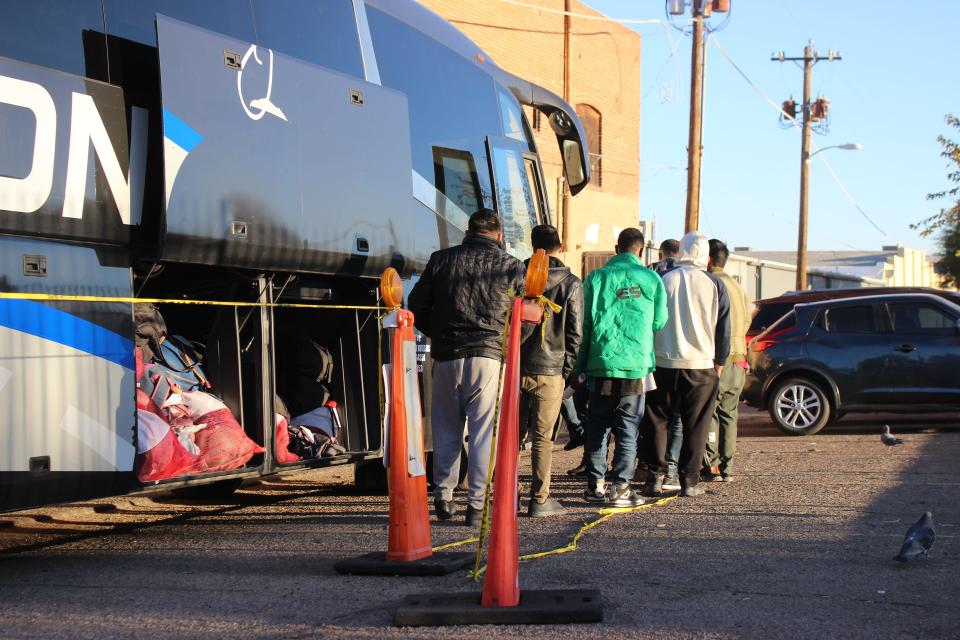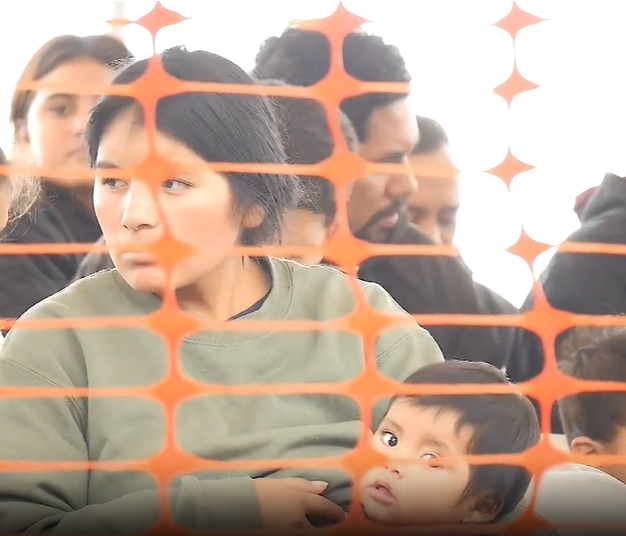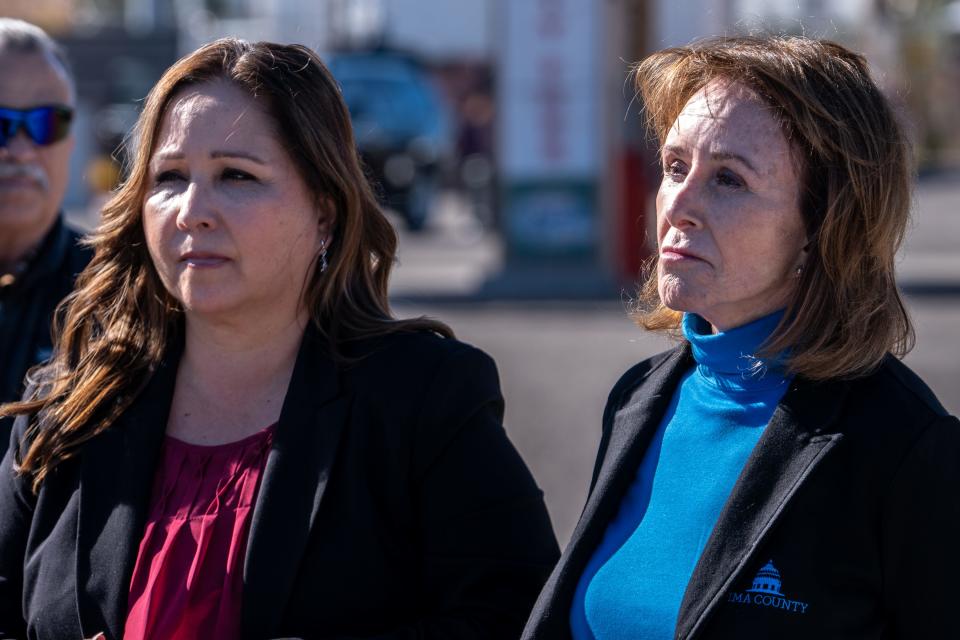Feds tell southern Arizona more money is coming to help agencies manage migrant releases
Pima County officials said they will continue to oversee a system to take in migrants and asylum seekers released at the Arizona-Mexico border after receiving assurances from the federal government that more money would be coming their way after the March 31 fiscal cliff they faced.
County Administrator Jan Lesher outlined that position Tuesday in a memo to the Pima County Board of Supervisors. Lesher previously had warned the board they would run out of federal funds March 31 and the county would have to stop participating in statewide efforts to avoid having migrants and asylum seekers released directly into the streets of Arizona border communities.
"I have sufficient confidence in the federal reassurances of funding, that I have directed County staff to work with Catholic Community Services (CCS) to plan for continued operations at the Ajo and Drexel facilities beyond the end of this month," Lesher said.
Those reassurances came after Congress allocated $650 million dollars to the Shelter and Services Program, a federal program managed by the Federal Emergency Management Agency that distributes funding to local governments and nonprofits providing humanitarian assistance to migrants at the border and in the interior of the country. That money is part of a $1.2 trillion spending bill passed over the weekend.

Pima County acts as the main fiscal agency for most of southern Arizona, distributing the money to other local governments and nonprofits in the region to cover expenses, such as medical screenings, food, transportation and housing for migrants that U.S. Customs and Border Protection cleared for release after processing them at the Arizona border.
FEMA has not announced how much of the $650 million will go to Arizona governments and nonprofits. Since 2019, Pima County has received about $77 million from the federal government to cover humanitarian aid costs.
"It is our expectation that in the coming weeks we will receive formal notice of additional federal funds that will be directed to Pima County in support of our operation," Lesher said in the memo.

In the meantime, she directed her staff to look at ways to make the funds last longer, and said the board will have to vote to extend vendor contracts to keep their operation going past March 31. The county's main partner is Catholic Community Services of Southern Arizona, which operates Casa Alitas, two migrant shelters in Tucson that can receive hundreds of migrants daily from across southern Arizona.
Pima County leaders welcomed Lesher's announcement and additional funding set aside by Congress to help manage migrants releases at the border. They previously had called on the federal government to step up and not place the burden on local governments on nonprofits.
"It will prevent hundreds of people a day from struggling to find the resources to travel on to their families and sponsors in other cities, and protects our community, ensuring safety for everyone," board chair Adelita Grijalva said. "However, this is not a solution to the problem; it’s only treating a symptom. When this money runs out, we could be facing in a few months the crisis we just averted."

February statistics released Friday showed that the Tucson Sector, which covers Pima, Cochise and Santa Cruz counties, continued as the busiest crossing route along the southern border. Border agents encountered more than 49,000 migrants between the ports of entry.
County leaders and nonprofits worried about what would happen past March 31, if they ran out of federal funds. That likely would have meant a reduced capacity at migrant shelters, plus the release of hundreds of migrants and asylum seekers at bus stations and other locations in smaller cities without transportation infrastructure, leaving migrants stranded.
Gov. Katie Hobbs expressed her relief in a written statement distributed Tuesday by Pima County that they will continue their operations providing humanitarian assistance to released migrants and asylum seekers at the border. She also praised the state's congressional delegation for securing additional funding for the Shelter and Services Program.
The state's Department of Emergency and Military Affairs has been busing migrants from Douglas, Nogales and Casa Grande to Tucson and Phoenix. Her administration helped Pima County purchase a large call center that now functions as Casa Alitas' main shelter and intake center for migrants in Tucson.
"From the beginning, I've remained committed to prioritizing practical solutions over political gamesmanship in addressing the border crisis, and today, that commitment is delivering results," Hobbs said. "Moving forward, I will continue working closely with our federal partners to ensure the swift distribution of these funds to support Arizona’s border communities, safeguarding the safety and security of our families while fighting to prevent unmitigated street releases."
Have any news tips or story ideas about immigration in the Southwest? Reach the reporter at rafael.carranza@arizonarepublic.com, or follow him on X (formerly Twitter): @RafaelCarranza.
This article originally appeared on Arizona Republic: Feds to send money to southern Arizona to avoid migrant release crisis

